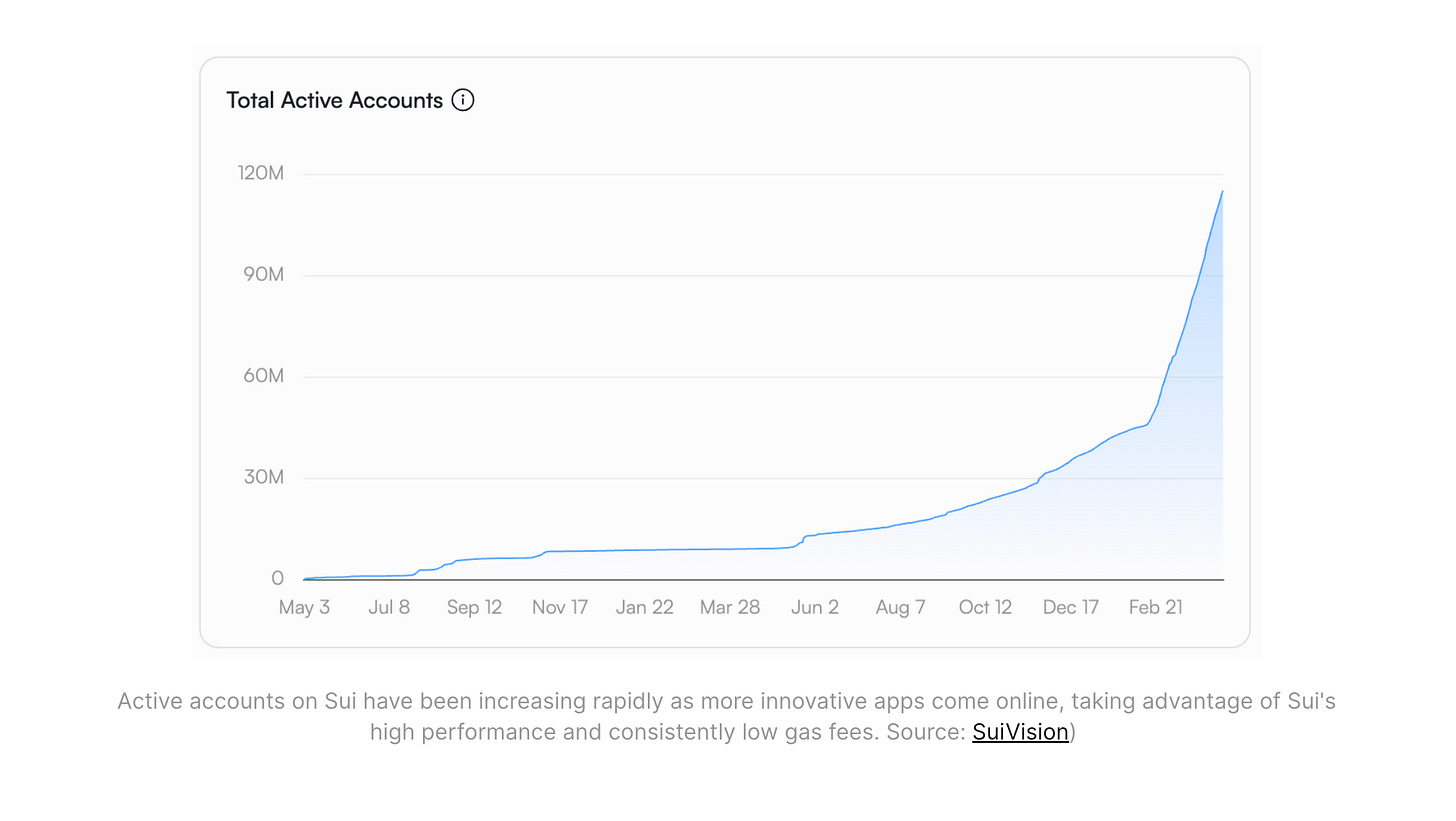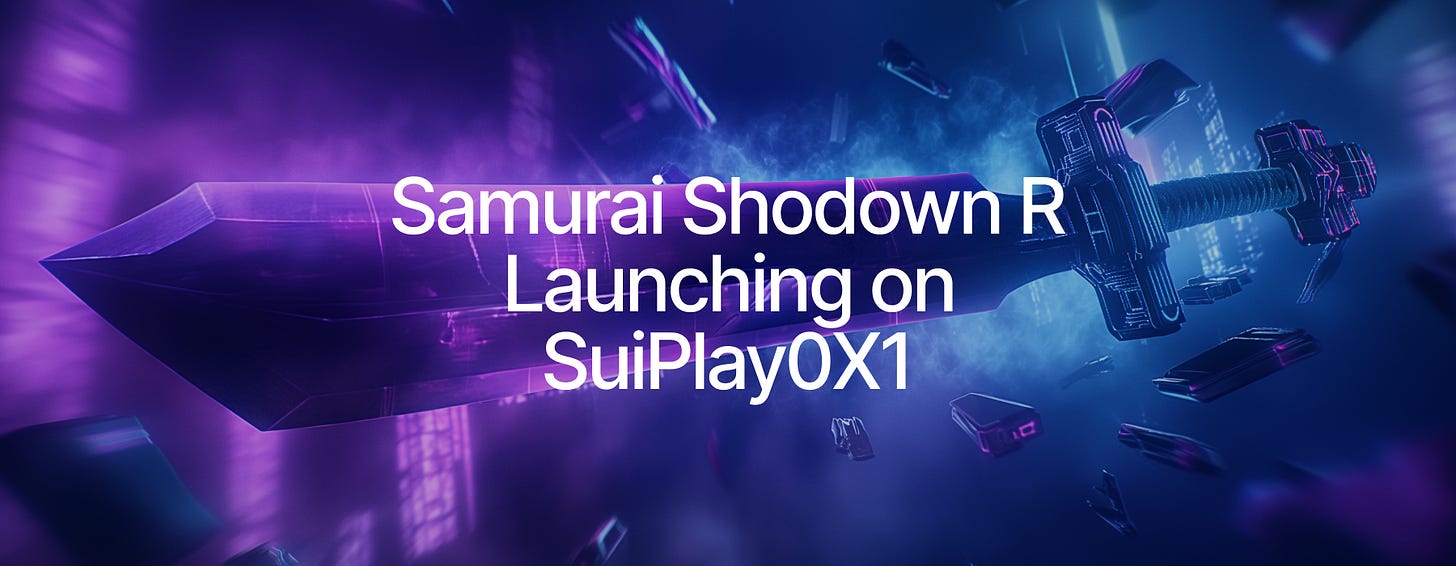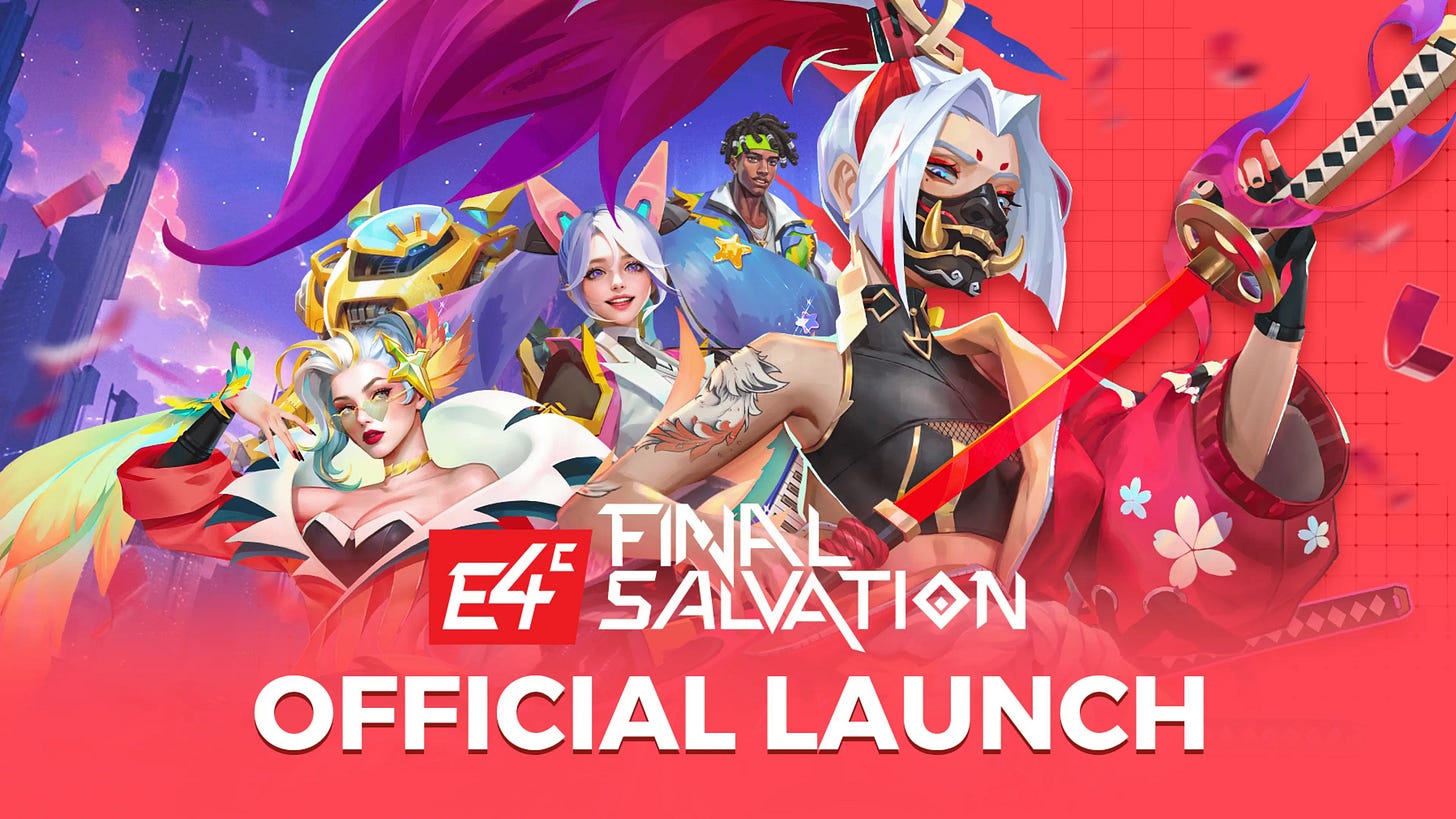Can Sui Become Web3 Gaming’s Powerhouse? It Has the Pieces—Now It Needs the Wins
This crypto bull run feels... different.
Bitcoin dominance keeps climbing, and almost every altcoin—especially the ones tied to Ethereum—has barely moved. It’s like this cycle forgot altcoins even exist.
But not all of them.
Solana exploded from its 2022 bottom (just ~$8!) to over $250, carried by a wave of memecoins and renewed momentum. And then there’s Sui—making its first real appearance in a bull market, and quietly turning heads. Among the few bright spots in a mostly frozen Web3 gaming scene, Sui Gaming stands out. Backed by strong infrastructure, growing developer interest, and even rumors of a native gaming console, it’s one of the few ecosystems showing signs of life. So where exactly is Sui Gaming now? What’s been built, what’s coming next—and is it actually a real opportunity, or just another narrative? Let’s take a look.
Let’s Talk Numbers: How Big Is Sui Gaming Right Now?
To put the scale of Sui Gaming into perspective, here are 3 key stats worth knowing.
300,000 Daily Active Wallets in Gaming
Sui has reached 300,000 daily active wallets specifically engaged in gaming activities, indicating robust user engagement within its gaming ecosystem. That level of daily activity rivals or exceeds many early-stage Web2 mobile games—and is higher than what most GameFi ecosystems on other L1s are currently reporting. For comparison, Ronin had around 100K daily users during Axie’s post-peak phase.
Gamers Represent ~10% of the Entire Sui User Base
Roughly 10% of Sui’s user base is made up of gamers, which translates to an estimated 4 million wallets with consistent gaming intent. This is meaningful because most L1s still see gaming as an experimental add-on. For Sui, it’s becoming a core vertical—comparable to how Solana leaned into memecoins to gain breakout traction.
70+ Games Are Being Built or Already Live on Sui
Sui currently hosts over 70 gaming projects from more than 65 studios—ranging from new Web3-native titles to adaptations of well-known IPs like Samurai Shodown R and Brave Frontier Versus. This puts Sui ahead of most new-generation L1s like Aptos and Avalanche in terms of gaming development activity. By comparison, Immutable X (which is gaming-specific) listed around 40 games in early 2024.
To understand how meaningful Sui’s gaming growth is, it’s important to also view it within the broader context of the Sui ecosystem—which is expanding at an impressive pace. As of Q2 2025, Sui’s total value locked (TVL) across DeFi protocols has reached $1.77 billion, marking a 700% year-over-year increase. Monthly active addresses surged from 10 million to over 40 million between February and April alone, while daily wallet creation peaked at 2.1 million—largely fueled by game-driven campaigns and quests. On the developer side, over 3,500 Move-based smart contracts have been deployed, making SuiMove one of the fastest-growing programming environments in Web3.
In short, gaming isn’t growing in a vacuum—it’s rising within a broader Layer 1 ecosystem that’s scaling in users, liquidity, and developer attention all at once.
From Zero to Playable: Sui’s Milestones So Far
Sui might be a newcomer in this bull cycle, but its gaming strategy didn’t come out of nowhere. Over the past year, the team behind Sui—Mysten Labs—has been quietly laying down the infrastructure, funding, and partnerships needed to turn “Web3 gaming” from a buzzword into something players can actually log into and play.
Built for Games Since Day One
The journey began in earnest with the launch of Sui’s mainnet in May 2023. Unlike many chains that only later pivoted into gaming, Sui’s roadmap included gaming as a native vertical from day one. Built on the Move programming language and with a focus on parallel execution, the chain offered something game developers badly needed: scalability without sacrificing UX. Fast finality, low fees, and customizable object-based asset ownership were clear technical hooks.
SuiPlay0X1: A Real Gaming Console
One of the clearest signs that Sui was serious about gaming came in early 2025, with the announcement of SuiPlay0X1—a dedicated handheld console developed in partnership with Playtron. While most “blockchain consoles” have historically stalled at flashy renders and whitepapers, this one is different: it’s real, shipping this year, and built with gamers (not crypto traders) in mind.
The device runs on Android and supports both Web2 and Web3 games out of the box. It features native Sui wallet integration, on-chain asset management, and its own curated game store—completely bypassing Apple and Google’s tightly controlled ecosystems. Within days of launch, pre-orders sold out, sending a strong message: there’s real demand for hardware purpose-built for a new generation of on-chain gaming.
SuiPlay0X1 is Web3’s most serious attempt yet at entering the real consumer hardware market.
G-DOLLAR: A Stablecoin for the In-Game Economy
To support the gaming economy behind the scenes, Sui also introduced G-DOLLAR, a programmable stablecoin tailor-made for gaming. Built with Playtron and M0, it will power in-game purchases, subscriptions, and cross-title rewards across the SuiPlay ecosystem. Launch is slated for late 2025—and it's aiming to make on-chain payments feel just as smooth as your credit card.
The Games That Are Putting Sui on the Map
Ultimately, talk is cheap—it all comes down to the number and quality of games being built. So, which recognizable IPs have actually committed to the Sui ecosystem?
Samurai Shodown R
SNK’s legendary fighting franchise gets a Web3 reboot with Samurai Shodown R, developed by Lumiwave and launching exclusively on Sui. Built for the upcoming SuiPlay0X1 handheld, this title integrates dynamic NFTs that evolve with player progress and utilizes Sui’s zkLogin for seamless onboarding. The game also introduces closed-loop tokens to foster clan-based economies, offering a modern twist on a classic series.
Brave Frontier Versus
Gumi’s Brave Frontier series, with over 38 million downloads globally, enters the blockchain arena with Brave Frontier Versus. This Sui-exclusive title combines strategic card battles with on-chain asset ownership, allowing players to truly own and trade their in-game characters and items. It’s a significant step in bringing established mobile RPGs into the Web3 space.
Code of Joker: Evolutions
SEGA’s renowned arcade card battler, Code of Joker, is being reimagined for the blockchain as Code of Joker: Evolutions. Developed by Parasol and exclusive to Sui, this title leverages NFT technology to enhance gameplay, offering players new ways to collect, trade, and strategize with their cards. It’s a notable example of a traditional gaming giant embracing decentralized technology.
E4C: Final Salvation
Created by Ambrus Studio (founded by ex-TikTok gaming lead Yat Siu), E4C is an anime-style MOBA that blends esports-style design with tokenized cosmetics and land ownership. It originally launched cross-chain, but recently expanded to Sui due to its smoother dev tooling and gaming infra.
Not All Fun and Games: What Sui Still Needs to Win
Sui has made a strong entrance into the Web3 gaming space, but it’s not without its challenges. While the chain has secured major IPs, launched impressive infrastructure, and attracted developers, being different doesn’t automatically mean winning. To understand where Sui stands, it’s worth comparing it to a few of its closest competitors—and identifying what still needs work.
Infrastructure vs Adoption
From a technical standpoint, Sui has clear strengths. Its object-based asset model and parallel execution are built for games that require fast, interactive systems. Compared to Solana, which has had repeated downtime and congestion issues, Sui offers smoother scaling and better modularity. Immutable, on the other hand, focuses heavily on NFTs with zero gas fees through its Layer 2 solution. That makes it very friendly for trading-heavy games, though it still relies on Ethereum security and tooling.
The tradeoff for Sui? Its architecture is different enough that onboarding developers can be harder. Move is powerful but unfamiliar to most Solidity-native teams, and some tooling gaps still exist—especially around analytics, live game ops, and SDK support for cross-platform engines like Unity or Unreal.
Users Are Coming, But Slowly
Despite impressive wallet creation numbers, the actual active player base for most Sui games is still small compared to Web2 standards. That’s not unique to Sui—it’s a common Web3 challenge—but it does put pressure on early flagship titles to retain players, not just mint them. User retention, polish, and mobile performance will matter more in 2025 than chain speed or token design.
In contrast, Solana has momentum in the memecoin community that often spills into gaming projects. Immutable has signed multi-year publishing deals and secured more mainstream game studio partnerships. Sui still needs a breakout hit—not just good infrastructure—to shift the conversation from “promising” to “proven.”
A Distinct Strategy, But Still in Progress
What makes Sui different is that it’s not trying to be just another EVM chain with GameFi on the side. It’s betting on a hybrid approach: high-quality IP, mobile-first hardware like the SuiPlay0X1, and flexible onboarding paths (like zkLogin) that lower the barrier for everyday users. These are smart bets, but the success of that strategy will depend on execution—shipping games that are fun, accessible, and sticky.
Sui has checked many of the right boxes: infrastructure, funding, IP, even hardware. But to win in a space filled with chains chasing games, it’ll need to convert those advantages into live, successful products. And like in games, it’s not the tutorial—it’s the midgame that matters most.
Sui isn’t the final boss of Web3 gaming—not yet. It still faces stiff competition, a cautious market, and the challenge of proving that blockchain games can retain real players, not just wallets.
But unlike many Layer 1s chasing hype or copying playbooks, Sui is building with a clear direction: strong infrastructure, native IP support, smoother onboarding, and even hardware that sidesteps traditional app store bottlenecks. It’s not just trying to support gaming—it’s trying to shape what blockchain-native gaming should feel like.
Whether that strategy pays off will depend on execution over the next 12–18 months. If just one or two of its major titles catch on—and if the SuiPlay0X1 delivers on its promise—Sui could carve out a unique lane in an otherwise crowded ecosystem.
So no, this isn’t the endgame. But for Sui Gaming, the real campaign is just beginning.
About Gaming Deep
The fusion of web3 and gaming is inevitable. Web3 gaming is poised to revolutionize game development, distribution, culture, and economic structures. Believing this shift, CARV introduces Gaming Deep, a series dedicated to exploring the latest advancements in Web3 gaming. Our mission is to uncover the social significance and financial potential of these developments, providing readers with early insights into industry trends and major milestones. Staying informed about these changes is crucial for gamers, developers, and enthusiasts alike. By understanding the evolving landscape, you can better navigate and capitalize on emerging opportunities within the gaming ecosystem.








